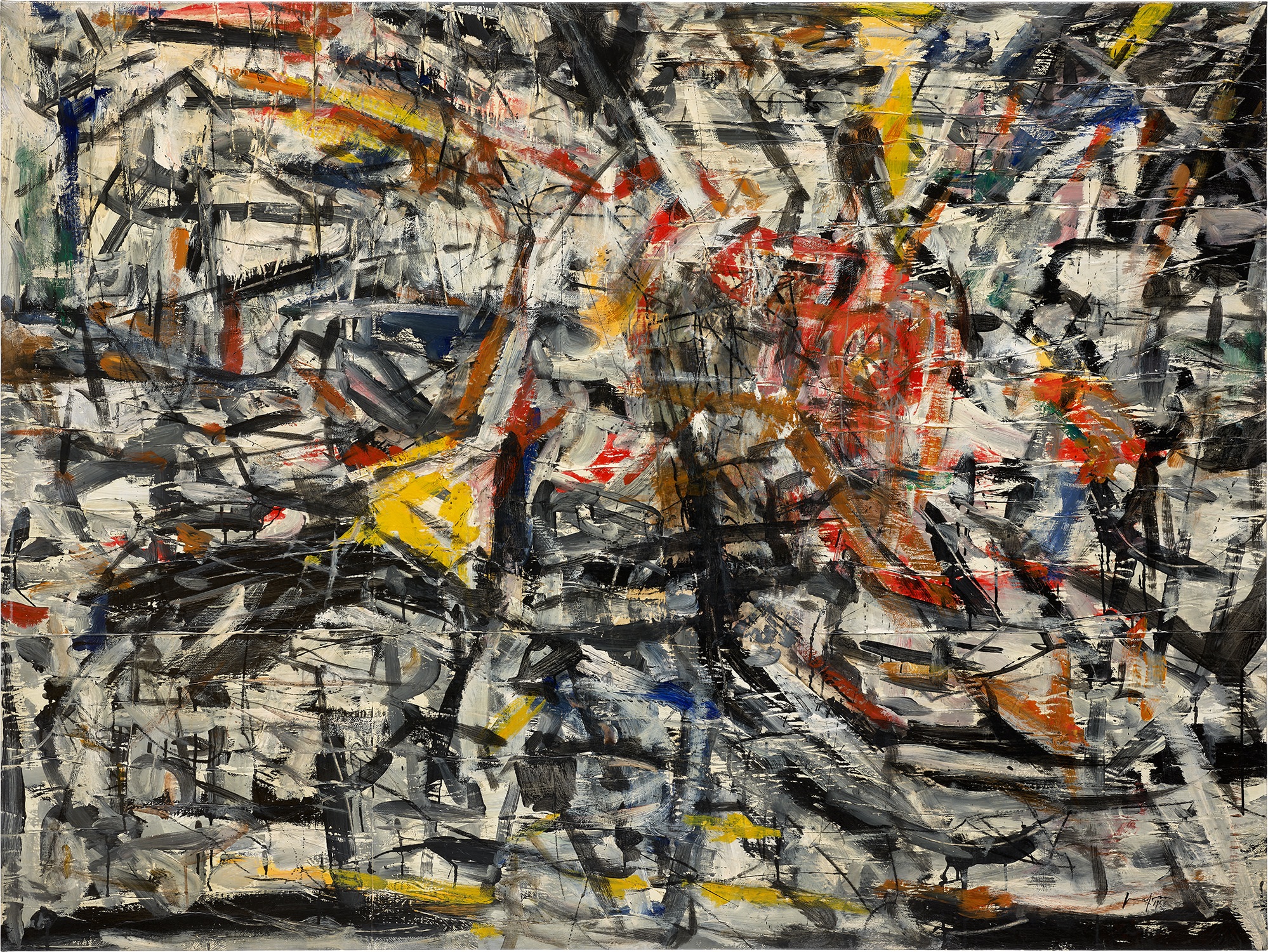



56
Emilio Vedova
Ciclo della Protesta (Brasile '56)
signed and dated "Vedova 1956" lower right; signed and dated "Vedova 1956" on the reverse
oil on paper mounted on canvas
59 x 78 3/4 in. (149.9 x 200 cm)
Executed in 1956.
This work is registered in the Archivio Emilio Vedova, Venice, under the n. 1502 and it is accompanied by a certificate of authenticity issued by the Archivio Emilio Vedova, Venice.
This work is registered in the Archivio Emilio Vedova, Venice, under the n. 1502 and it is accompanied by a certificate of authenticity issued by the Archivio Emilio Vedova, Venice.